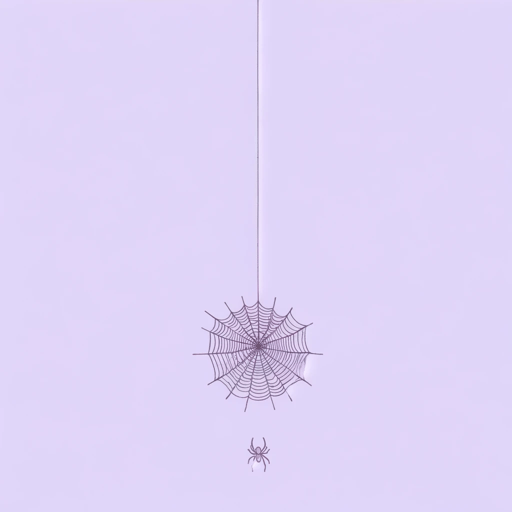18 pages • 36 minutes read
Robert LowellEpilogue
Fiction | Poem | Adult | Published in 1977A modern alternative to SparkNotes and CliffsNotes, SuperSummary offers high-quality Study Guides with detailed chapter summaries and analysis of major themes, characters, and more.
Summary and Study Guide
Overview
“Epilogue” was published in Robert Lowell’s’ final book of poetry, Day by Day, which was released in 1977, the year Lowell died. The poem acts as an epilogue to both the book, in which it appears last, and to Lowell’s poetic career in general, wrestling as it does with Lowell’s understanding of what poetry should do and how it should do it. Lowell is widely considered a central figure of Confessional Poetry, an American poetry movement most famous for its autobiographical features, and “Epilogue” dialogues directly with Lowell’s relationship to this movement. The poem is an intimate and a subtly, formally complex statement on the nature of art by a poet reflecting back on his career.
Poet Biography
Robert Lowell (or Robert Traill Spence Lowell IV) was born in Boston, Massachusetts in 1917 to a family of wealthy and powerful cultural elites. Lowell’s father belonged to the “Boston Brahmin” family (Boston’s traditional aristocrats), while his mother was a descendant of Mayflower pilgrims, signers of the US Constitution, and famous Puritans. Lowell, afforded the best education and connections, decided he wanted to become a poet while in high school. After becoming dissatisfied with his time as an undergraduate at Harvard, Lowell traveled to Nashville where he pitched a tent on the lawn of one of his poetic idols, Allen Tate. While camping outside Tate’s house, he studied with the poet and ate meals with his family.
Lowell went on to enjoy a wildly successful literary career, publishing several books of poetry, translations, and what he called verse journals. Lowell served as the 6th US Poet Laureate (then called the Consultant in Poetry to the Library of Congress). He taught in undergraduate and graduate programs at many institutions, including the Iowa Writer’s Workshop, Boston University (where he taught both Sylvia Plath and Anne Sexton), Yale, Harvard, and the New School. Lowell was a very public conscientious objector to WWII, accused other artists of communist leanings during the McCarthyist red scare, was married three times, and spent time in the US, the UK, and prison. By the time he died at 60 years of age in 1977, Lowell had lived to see himself on the cover of Time magazine where he was praised as “the best American poet of his generation.”
Poem Text
Lowell, Robert. “Epilogue.” 1977. Poetry Foundation
Summary
Lowell opens his “Epilogue” with a question. In the first four lines the poet despairs that the formal features of poetry, “Those blessèd structures,” are no help to him (Line 1). The speaker wants to write a poem that is “imagined, not recalled” (Line 4). According to the opening quatrain, the poet is unable to understand why “plot and rhyme” (Line 1) cannot help him write this poem of imagination.
The poem proceeds to follow the thought process of the poet struggling with the craft and nature of his work. After the opening question, the speaker reflects on a statement he himself made in the past, that “The painter’s vision is not a lens” (Line 6). The italicized couplet, although apparently made about visual art, also expresses a claim about the nature of art in general. The speaker’s remembered statement portrays the artist not as an objective recorder of events but as an active and interested participant. The artist’s vision is not simply receptive, but actively “trembles to caress the light” (Line 7).
Despite the speaker’s old statement that the artist is not a documenter but a creator, he doubts this claim in his own artistic practice. Instead of caressing light, his eye sometimes feels like a “threadbare art” (Line 9), making only a “lurid” “snapshot” (Lines 11, 10). Lowell wrestles with the apparent gap between his theory of art and his experience as an artist, where his poems sometimes seem like reportage “heightened from life, / yet paralysed [sic] by fact” (Lines 12, 13). The speaker sums up his dismay over the documentarian or journalistic element of his poetry in the archaically formulated “All’s misalliance” (Line 14).
After his expression of dislike for the “lurid, rapid, garish, grouped” (Line 11) elements of his poems, Lowell now wonders, “Yet why not say what happened” (Line 15)? Instead of ruminating further on the failure of his poetic practice to live up to his own poetics, Lowell undertakes a revision of his theory to follow his practice at this crucial turning point in the poem. Instead of avoiding the “snapshot…facts” (Lines 10, 13) of recollection, the speaker now “pray[s] for the grace of accuracy” (Line 16).
Following the metonymic stand-in of painter for poet that the poem initiates in Lines 6 and 7, Lowell looks to the Dutch Baroque artist Vermeer for inspiration. According to the poem, Vermeer’s work reproduces “the sun’s illumination” (Line 17) with “accuracy” (Line 16), making the painting in question an example of the new type of art which Lowell yearns to create despite his previous artistic theory.
“Epilogue” concludes with a statement from the speaker, who has determined that people themselves are “poor passing facts” (Line 20) just like the facts of his “threadbare art” (Line 9). That human beings are both facts and mortal causes them to “give / each figure /…his living name” (Lines 21, 22, 23). To document—to name—is an act of tenderness and of art, the speaker concludes.
Related Titles
By Robert Lowell



